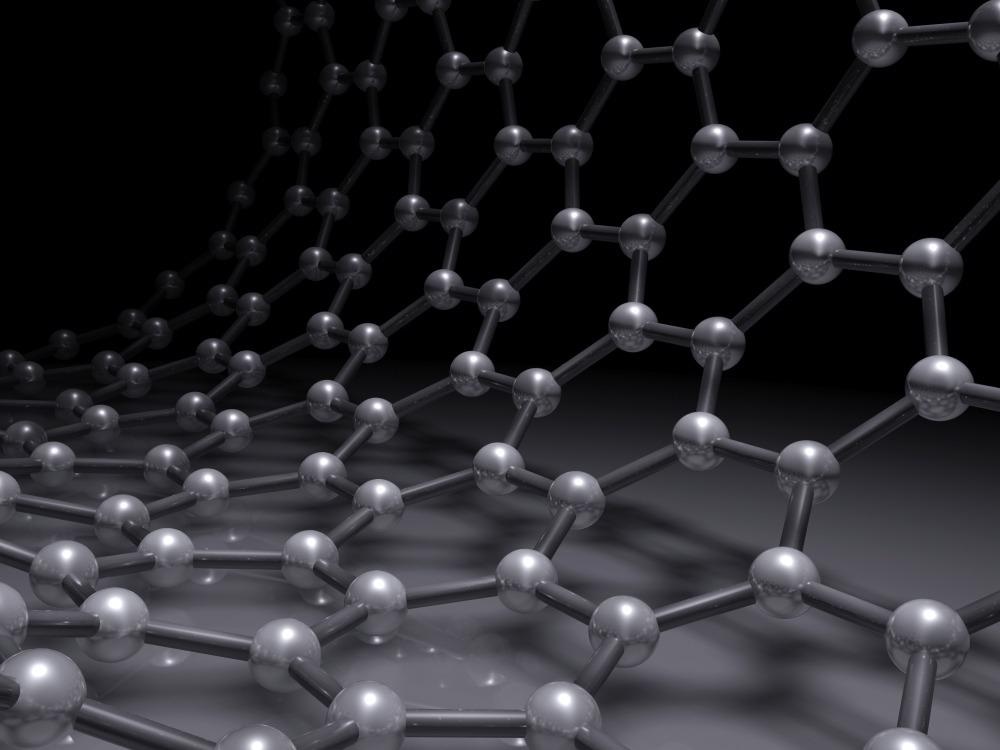Characterization of nanotube aggregation as a vital material property and the investigation of its effect on cellular interactions is presented in a study published in the journal ACS Applied Materials & Interfaces.

Study: Aggregation Reduces Subcellular Localization and Cytotoxicity of Single-Walled Carbon Nanotubes. Image Credit: Evannovostro/Shutterstock.com
Biology and Nanotechnology – A Match Made in The Lab
Bionanotechnology is considered one of the most rapidly growing fields within biomedical research.
Due to their extremely small size, excellent electrical and magnetic characteristics, and the capacity to demonstrate increased biocompatibility after functionalization, nanomaterials are tailored and made for biological sensing and imaging applications.
One such nanomaterial are single-walled carbon nanotubes (SWCNTs), a carbon-based material.
Are Single-Walled Carbon Nanotubes Efficient Biological Sensors?
Single-walled carbon nanotubes are considered ideal nanomaterials for biological sensing applications due to their inherent fluorescence, which is stable and environmentally responsive.
This inherent fluorescence also emits near-infrared (NIR) wavelength light. Furthermore, SWCNTs offer a one-dimensional architecture, making them very appealing for utilization in subcellular sensing and imaging.
DNA-based SWCNTs
Single-strand DNA has proven to solubilize SWCNTs through layering and hydrophobic interactions, resulting in DNA-based SWCNT nanostructures with much-improved biocompatibility.
As biosensing devices, these DNA-based SWCNT nanostructures have been embedded into biomaterials, injected into biofluids, and immobilized in imaging substrates. Furthermore, DNA-based SWCNTs may be swallowed by cells through active endocytosis, wherein their optical characteristics can be used to study particular physiological processes and identify intracellular proteins.
Issues at Hand
Despite substantial improvements in biology-based nanotechnology, underlying difficulties with the physical properties of nanomaterials remain and must be resolved.
When analyzing how SWCNTs engage with the environment after being introduced into complicated biological settings, aggregation is sometimes disregarded.
In the presence of proteins, carbohydrates, lipids, and other biomolecules in bio-fluids, a bio-molecular corona can take shape around the DNA-based SWCNTs. The aggregation among these SWCNT biomolecule complexes can generate much bigger molecules.
When contrasted with individually distributed SWCNTs in pure laboratory tests, these larger aggregates may interact differently with tissues and cells, and thus, their existence can alter experimental results.
Aggregation disturbs the balance of DNA-based SWCNT biosensing devices. These devices depend on an optical reaction to environmental stimuli by limiting analyte access to the SWCNT.
Another problem to consider when using nanoparticles for biological sensing is whether the particles are harmful and whether the aggregation condition has any influence on cytotoxicity.
What Does the Research Say?
Considerable research has been conducted to identify the impact of particle shape, size, and charge on cell-nanoparticle interactions; however, aggregation intrinsically modifies these features and has been mostly overlooked.
Previous studies have shown that more significant accumulations of SWCNTs are far less cytotoxic than an equivalent weight of individually dispersed SWCNTs owing to lower surface area-to-volume ratios. It is thus critical to explore how an originally aggregated SWCNT specimen is processed inside distinct kinds of cells in the context of using these innovative sensing and imaging techniques for therapeutic applications.
Highlights of the Study
In the study, differential uptake along with optical modulations resulting from intracellular processes and cytotoxicity of DNA-based SWCNTs as a function of the aggregation phase and cell type were investigated.
The purpose of this research was to examine aggregation as a basic material feature on a nanoscale level and to describe the resultant biological interactions. The team produced two distinct DNA-based SWCNT specimens from a single starting material. The two specimens were: a low-quality dispersion specimen, and a mono-dispersed specimen, both with specified values of aggregation.
The team discovered that when cells were similarly dosed, the uptake rate in any particular cell line was not dependent on the quality of the starting material. It was also noted that when the mono-dispersed specimen was used, more nanotubes were consistently observed in subcellular areas, yet the intracellular dispersion of aggregates reflected the stock specimen population.
The team deduced that specimen reliance implies that single SWCNTs may be preferentially aggregated in single vesicles following internalization, and thus the level of aggregation may impact particular intracellular routes. Cell proliferation was similarly shown to be reduced in cells dosed with mono-dispersed nanotubes, suggesting that the aggregation phase influences internalization and processing routes.
The team finally concluded that when describing nanomaterials in biological environments, aggregation impacts must be considered.
Reference
Gravely, M., Kindopp, A., Hubert, L., Card, M., Nadeem, A., Miller, C., & Roxbury, D. (2022). Aggregation Reduces Subcellular Localization and Cytotoxicity of Single-Walled Carbon Nanotubes. ACS Applied Materials & Interfaces. Available at: https://pubs.acs.org/doi/10.1021/acsami.2c02238
Disclaimer: The views expressed here are those of the author expressed in their private capacity and do not necessarily represent the views of AZoM.com Limited T/A AZoNetwork the owner and operator of this website. This disclaimer forms part of the Terms and conditions of use of this website.